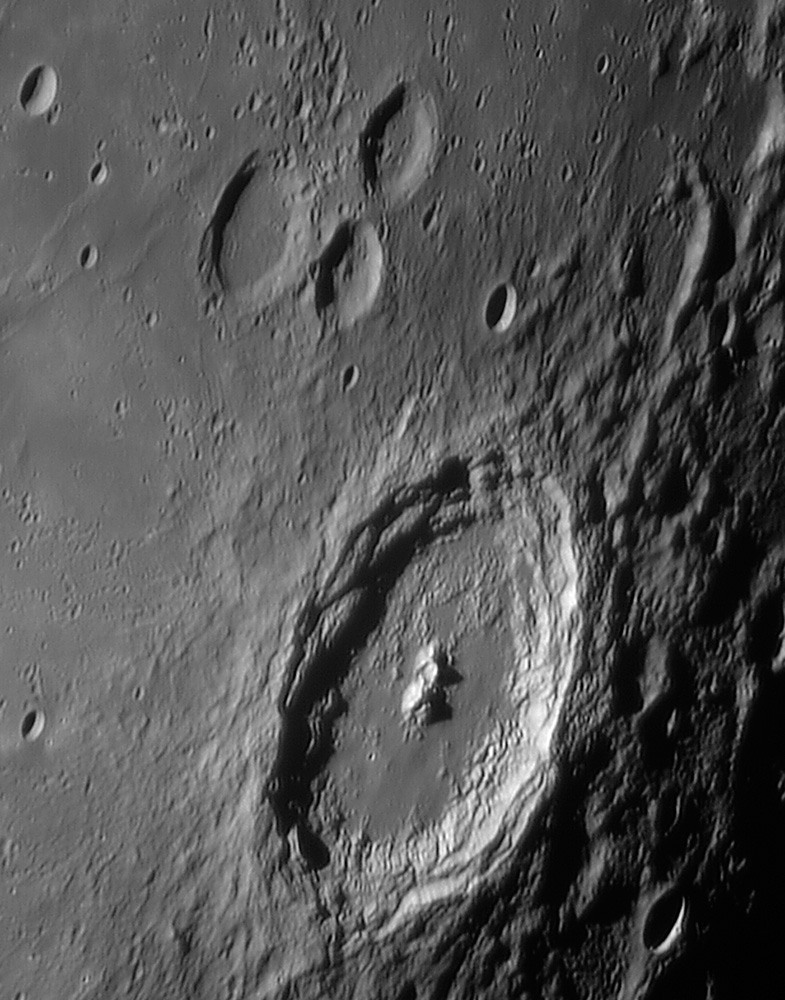
image by Павел Пресняков (Pavel Presnyakov), Kiev Ukraine
Yesterday’s LPOD dramatically showed a low Sun view over eastern Mare Fecunditatis, with lines of secondary craters converging off camera. Here is the crater that those lines point back to and whose ejecta formed the pits. Langrenus is a fairly young impact crater, with rays still visible under high Sun illuminations. Pavel’s image shows the two close-spaced peaks on the crater floor casting a forked shadow; the LTO map gives a height of 4,706 m for the southern peak and something over 4,300 m for the northern one. The flat floor south of the peaks is probably impact melt, and it has also been mapped 50 km beyond the rim to the southeast. The inner walls of Langrenus have always seemed untidy to me. Instead of the stair-step terraces as seen in many other large young craters, the ones here lack systematic structure, as if the sliding down of the walls was not controlled by fundamental fractures.
Technical Details:
27.10.2007, 23:10 UT. TAL-250K + EVS-135, b/w 1280×1024 15fps + barlow 3X, 250 frames from 4000 in Registax4.
Related Links:
Pavel’s website
PS - I just finished reading Red Star Rising, an exciting retelling of the competition between Korolev and Medaris to launch the first Earth satellite. I thought I knew this story but learned many new insider details - a great read!
COMMENTS?
Click on this icon File:PostIcon.jpg at the upper right to post a comment.



